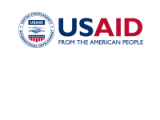Outline
This tool is designed to identify the exposure (vulnerability) of countries to shocks in global markets that may cause supply shortages or price surges in staple foods and key agricultural inputs (like fertilizers) which could erode food security in countries if they are highly dependent on imports of such commodities and/or lack the economic capacity to cushion their vulnerable population against the impacts of those shocks.
Last update: November 2025
The tool effectively served, for instance, to identify early on exposure to the shocks to global food and fertilizer markets caused by the war in Ukraine that started in February 2022. Version 1 of this tool was created in March 2022 and labelled “Vulnerability Analysis of Wheat and Fertilizer Trade Dependence” given the supply bottlenecks the war and certain policy responses (especially trade bans and restrictions) created in global markets for wheat and fertilizers. Based on the tool country “hot spots” were identified based on degree of vulnerability to the external shock and risk to food security. The framework for this analysis can be explored in this Methodological Note. For a presentation of the initial findings, see the video below
The framework was further used for country-specific and region-specific vulnerability assessments, including Egypt, Sudan, Yemen, Lebanon, Kenya, Nigeria, Bangladesh, and West Africa and South America.
Vulnerability to Global Market Shocks V.1: Wheat and Fertilizer Price Shocks Caused by Ukraine Crisis
V.1: Vulnerability to Ukraine-war Shock to Wheat and Fertilizer Markets – Egypt, Lebanon, and Yemen
The Vulnerability to Global Market Shocks V.1: Wheat and Fertilizer Price Shocks Caused by Ukraine Crisis dashboard identifies countries most vulnerable along a 10-category typology. It shows a significant number of countries directly and very strongly exposed to the conflict and/or subsequent export restrictions, especially countries in the Middle East, North Africa, and Central Asia, as well as a few countries in Africa and Asia. It also shows that the vast majority of low- and middle-income countries (LMICs) are more indirectly affected, as they face significant increases in the cost of food, their populations spend high shares of income on food and initial food insecurity levels are already high.
Click here for the full screenV.1: Vulnerability to Ukraine-war Shock to Wheat and Fertilizer Markets – Country Hot Spot Map
To understand this better, we need to closely examine the information on the dashboard and connect it with more data and insights about each country's unique situation. From the dashboard information, we can create a detailed profile for a specific country. For example, the map below displays important vulnerability indicators for three countries in the MENA region: Lebanon and Yemen (both in category 1) and Egypt (category 3).
Click here for the full screenSource: IFPRI policy seminar | Click here to see the presentation
Further reading on global analyses
Ukraine one year later: Impacts on global food security
When Russian troops invaded Ukraine one year ago, the war appeared to pose a grave threat to global food security.
Addressing the food crisis in Yemen: The private sector’s key role amid local conflict and global market disruptions from the Russia-Ukraine war
The Yemen conflict, underway since early 2015, has led to an ongoing, unprecedented humanitarian emergency. Food needs far exceed current consumption levels, with 3.5 million pregnant or breastfeeding women and children under 5 suffering from acute malnutrition and up to 19 million people affected by food insecurity in 2022.
How sanctions on Russia and Belarus are impacting exports of agricultural products and fertilizer
The sanctions imposed by the European Union, United States, Canada, and other countries on Russia and Belarus following Russia’s February 24 invasion of Ukraine included restrictions on banking, trade, technology transfers, and specific individuals. These came on top of earlier sanctions on both countries – on Russia, in response to its 2014 annexation of Crimea, and on Belarus, in response to human rights violations in 2020 and its forced grounding of Ryanair flight 4798 to seize a dissident journalist in 2021.

